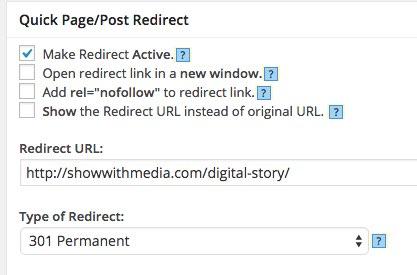By now, it is almost obvious that social media marketing is the most effective form of advertising you can use to get more exposure and conversions. Social media can also help you in growing your brand authority as well as bringing in new customers.
As an affiliate marketer, you will need social media traffic to grow exposure and new conversions. But mastering the strategies for using social media marketing to gain sales and conversions requires some skills. You also need to understand the behavior of social network users as well as the platforms to find the right audience for your affiliate marketing business.

This post shows you effective strategies to use social media to scale up your affiliate business performance. Prior marketing experience is not a requirement. As soon as you learn how to meet the right audience for your affiliate marketing business, you can start turning them to customers, make profits, and grow your business.
These are the strategies that will help you to effectively use social media marketing in your affiliate business for guaranteed ROI. Take your time and learn each skill and deploy them accurately on your marketing plan.
1. Stay Consistent in Your Posts
Various social media networks use unique algorithms for ranking content on the sites. For instance, Facebook ranks posts as per the number of shares, likes, and comments it gets. The more the engagement, the better it will be for your posts to reach your desired audience.
But this is not always the case. Remember that unless you boost a post, only your followers can get it on their feed. It, therefore, implies that more followers will mean better performance on your campaigns. And that is by assuming that your followers are online by the time you post.
Putting assumptions aside, the number of people who receive your updates on their feeds is far much less than the followers you have. Some people will get your post while others will miss it. By posting consistently, you will increase your reach to more people in your audience. Posting more regularly will also help you retain and gain more followers on social networks.
2. Embed Videos and Images in Your Posts
Video marketing is still the leader when we talk about content marketing. YouTube and Instagram are at the top of the social networks for video consumption. But users on other social networks also prefer content with video and graphics. It leads to more engagement than text-only content.

Using live video sessions on Instagram and Facebook can boost your visibility even more. But when uploading content consistently on your social media pages, you will need to use a lesson maker to create custom videos that explain concepts to your followers. You can also illustrate how your products are easy to use, their benefits, and performance in short videos.
Apart from videos, you can use images to grab the attention of your audience as they scroll their news feed. Ideal images should be photos of people who express happiness as they enjoy the products you are promoting. You can also upload photos of new product arrivals, especially if you are into fashion and style.
3. Focus on Engaging Content
Your Facebook, Instagram, Twitter, or any social network account is different from your blog. In the same manner, communication on social platforms should be different from what you post on your affiliate landing pages. Social media users follow you because you serve their interests and not because of pitching high-end products.
Posting your affiliate messages on social networks can drive your audience away from you. In most cases, people who see strong promotions on social media take it for spam. Some of the people who see your campaigns on social media promoting products directly in a compelling manner can mark them as spam.
Once you receive negative feedbacks, your audience reach will drastically start to drop. Too much “mark as spam” from social network users can lead to suspension of your business account. Regaining your authority would take more time and investments than you are ready to bargain for.
Social media content needs to be engaging, friendly, and address people’s interests. A business page needs to address the prospect needs. But before you want to turn them into customers, bring them closer so they feel comfortable and secure around you. Provide content that addresses various issues people face in your business line and include a link to your blog or landing page.

You can then use the landing pages or blogs to promote the products you wanted. But sometimes your prospect may be in need of the products you are promoting but not ready to buy for one reason or another. Utilizing squeeze funnels will help you generate leads so that you can contact them later with enticing offers to make more sales.
4. Sell with Drop Shipping
Drop shipping is an awesome way to start an eCommerce business without having a physical store. It helps you to create products based on your niche so that you can serve your customers better.
Drop shipping allows your customers to buy directly on your website, and the product supplier will ship the items to the buyer. All the information is communicated from your website to your drop shipper in the background. You do not have to do lots of work.
One disadvantage with drop shipping is that there are not so many stores that sell the products that you would want to sell. Some affiliate networks offer a wide range of products and services you can sell online, but you must link to them so they can sell from their stores. That is why the next point matters.
5. Use Redirects in Your Links

Creating redirects on WordPress
If you choose to post the product on your social media and link to it directly, consider redirecting the URLs. Many people fear to click on affiliate links. This is especially true for links that have question marks and ampersand in them. The social media users think that you are trying to track and sniff on them.
Other people would think that the products you are promoting through affiliate links are not real or of high quality. Their thought would be that you are sharing the products because you are receiving incentives for the sales you make. For this reason, they avoid clicking the affiliate links that you share.
To overcome the challenge, you will need a redirect to handle your affiliate links. URL redirects are essential because they make the affiliate links look less spammy (the way social media users see them). You receive more clicks when the links look clean.
Another reason for using URL redirects is that you can easily track all the clicks that you receive on the affiliate links. You can use your collected stats from the URL redirector or shortener you are using to check the performance of your links in terms of clicks. The click stats give you the insights you need to polish up your content and products for better conversions.
There are two main types of link redirecting solutions you can use.
Third Party URL Shortener
A third party link shortener helps you to redirect your users using short links that are easy to understand and even remember. For instance, you can shorten a link from https://www.product-website.tld/aff.php?aff_id=123456&productID=123ABC&Channel=Auto
to https://shortURL.tld/CustomizedProductName.
The customized product name tag helps you to create links that your audience will understand.
Whenever a user clicks on the redirector link, they are forwarded to your affiliate link with all the parameters passed to your affiliate network. The user’s browser also catches the cookies from the network so that you get your sale recorded. Bitly.com is a good example and choice for shortening affiliate URLs.
Redirect with Your Website
Apart from third party link redirectors that are easy to implement, you can do the task on your website and achieve the results you desire. Your website allows you to shorten the affiliate links using your brand website links. This adds authenticity to your links because people would think you have the products on your website.
You can use various methods to redirect your users with your domain name. WordPress, for instance, has plugins that help track clicks on affiliate links. The user sees a link starting with your complete domain name, e.g. https://your-domain.tld/your-customized-product-name.
Masking links with your website URL clears the suspicions people build up when they see common URL shorteners like bit.ly or goo.gl that are easy to use. You can create URL masks on your website and your followers would think you are selling the items on your site (not so good in some circumstances because of checkout address!). Masked links also keep all the click statistics you need to grow your affiliate business.
5. Choose the Products Carefully
You cannot sell everything that you come across on the internet. There are so many products and services available for sale via affiliates. Another thing is that there are so many marketing networks that promote affiliate content or products. You cannot manage all of them as well. You have to make a decision about what to promote and from which seller or marketing agency.
When you are choosing your products, you should study your audience and learn what they like and select products that meet their needs. A product that fits the “Is this really for me?” context should be what you are promoting on your website and social media channels.
6. Add Links Contextually and Toward the End of Your Content
You could argue that many people do not read posts to the end and that you should add your links as early as possible. I differ! The first reason is that your readers cannot consume all your content because you are either “boring” or irrelevant in your posts. When your content lacks the juice and flow, your readers will abandon it.
Adding links in the first paragraph of your posts will not help you to get more clicks and sales. If your content is not in line with your niche or prospect expectations, they will abandon it with all your links. Also, when a person sees an affiliate link at the beginning of your content, they will become suspicious.
The posts you are using to promote your affiliate links need to be valuable to your readers. And they should offer more value to the reader before you think of making a sale. Your content should also revolve around the product you are selling, but not focused on it. It will help you to add your affiliate links contextually and avoid being spammy.
7. Include Relevant Disclosures on Your Posts
In case you are purely posting an affiliate product description and a link to the product page on your affiliate network, you need to disclose that to avoid any penalties. The Federal Trade Commission is busy on the lookout for people who promote content without proper disclosure on social media.
Disclosing that you are posting advertisements on social media will show that you are clean in your dealings. It is also a form of ethics and a way to avoid falling on the wrong side of the law. A simple tag (like #Promoted, #Ads, #Advertisement, etc.) on your sponsored content will suffice this. It is ideal to put your disclosure at the first line of your posts because some networks truncate or hide part of the text.
Summary
While the tips, strategies, and methods can help affiliate marketers to make gains in their business, you need to understand that each business can perform differently from another. Sometimes you may not be sure what will work best for you. Patience is a good practice when testing out the methods that work for you.
It is the era of social media, so you need to be active in order to be recognized among the public. It is inadequate to just post new product announcements on Facebook or Twitter. People need to be aware, design appropriate informative content material and take an active part in genuine and non-spammy methods. You can learn Digital Marketing Course in Surat Varachha to Improve your Business on Social Media.


